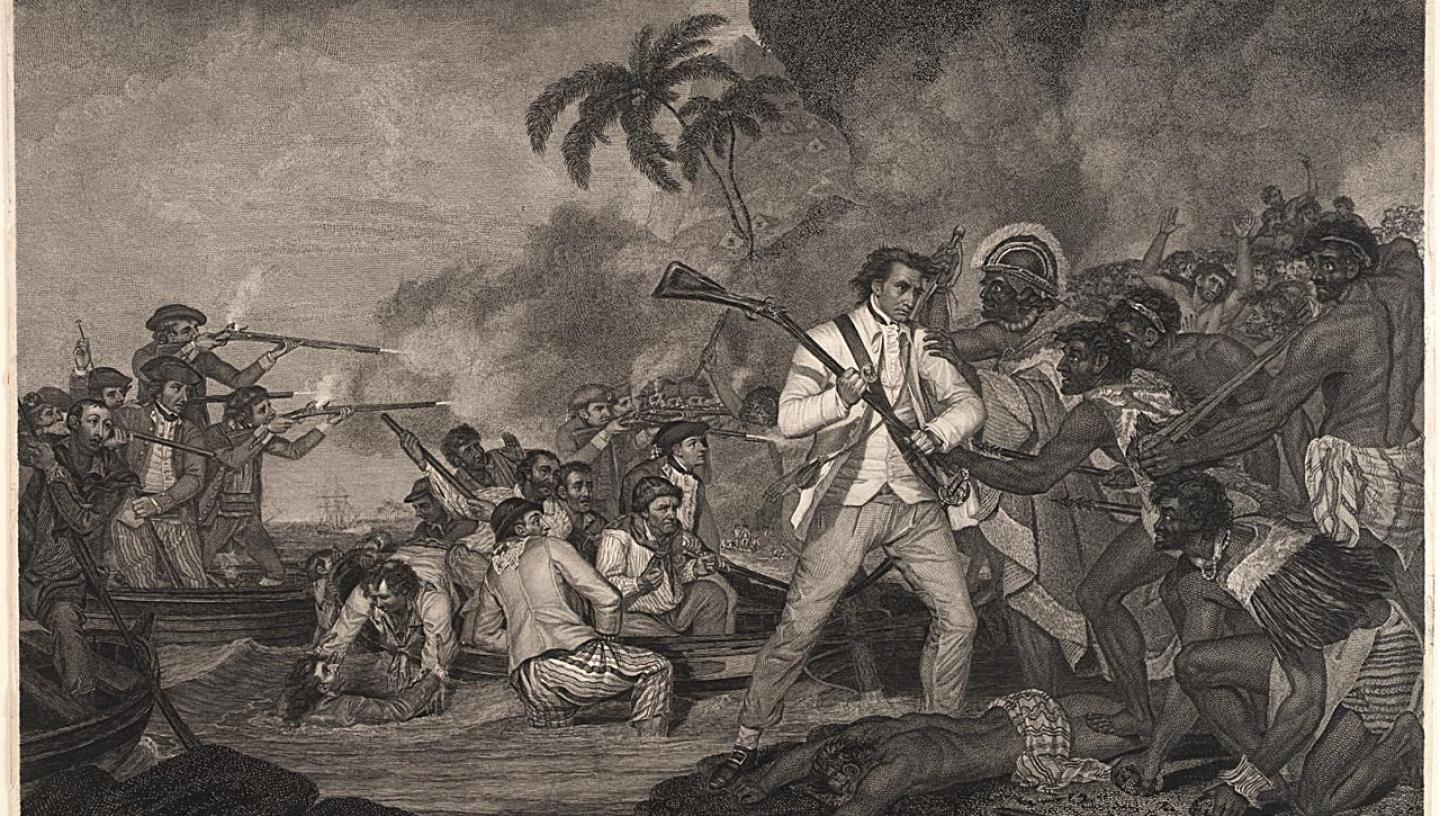
Back ashore and personally promoted to post-captain by George III, it was widely expected that Cook would spend his remaining days in semi-retirement.
As it turned out, he was soon discussing an expedition to find the fabled North-West Passage. On 12 July 1776, he was on his way.
Why did Cook make a third voyage?
Cook's third and last voyage was to find the North-West Passage believed to link the Atlantic and the Pacific oceans. If Britain could find a way to enter the Pacific without having to sail through the treacherous seas around Cape Horn, it could open up all manner of trade advantages and the western coast of the Americas.
Cook again took the Resolution and another Whitby collier, the Discovery. They made their way to the Pacific to approach the Americas from the west.
On his way to explore the coastline of Alaska, he chanced upon Hawaii. When his best efforts to find a way through the frozen coastlines of North America failed - and the weather deteriorated - he returned to Hawaii to sit out winter.
Treated like a god
Addressed reverentially as ‘Orono’ and greeted with elaborate welcomes, it seems highly likely that the people of Hawaii considered Cook to be a god on his arrival. Cook seemed to play along with the pretence. After receiving elaborate and costly tributes, Cook and his crew eventually wore out their welcome. When they finally left Kealakekua Bay, it appeared that the previously welcoming locals were happy to see them go.
A fatal encounter
Cook's ships were forced to return just four days later because the Resolution needed repairs to her mast. This time the mood had changed.
When Cook tried to take the king hostage after the theft of a ship's boat, the inhabitants became alarmed and during a struggle Cook was stabbed and killed on 14 February 1779.
Captain Clerke took command of the ships, but he too died on the voyage and Lieutenant Gore finally brought the ships home.